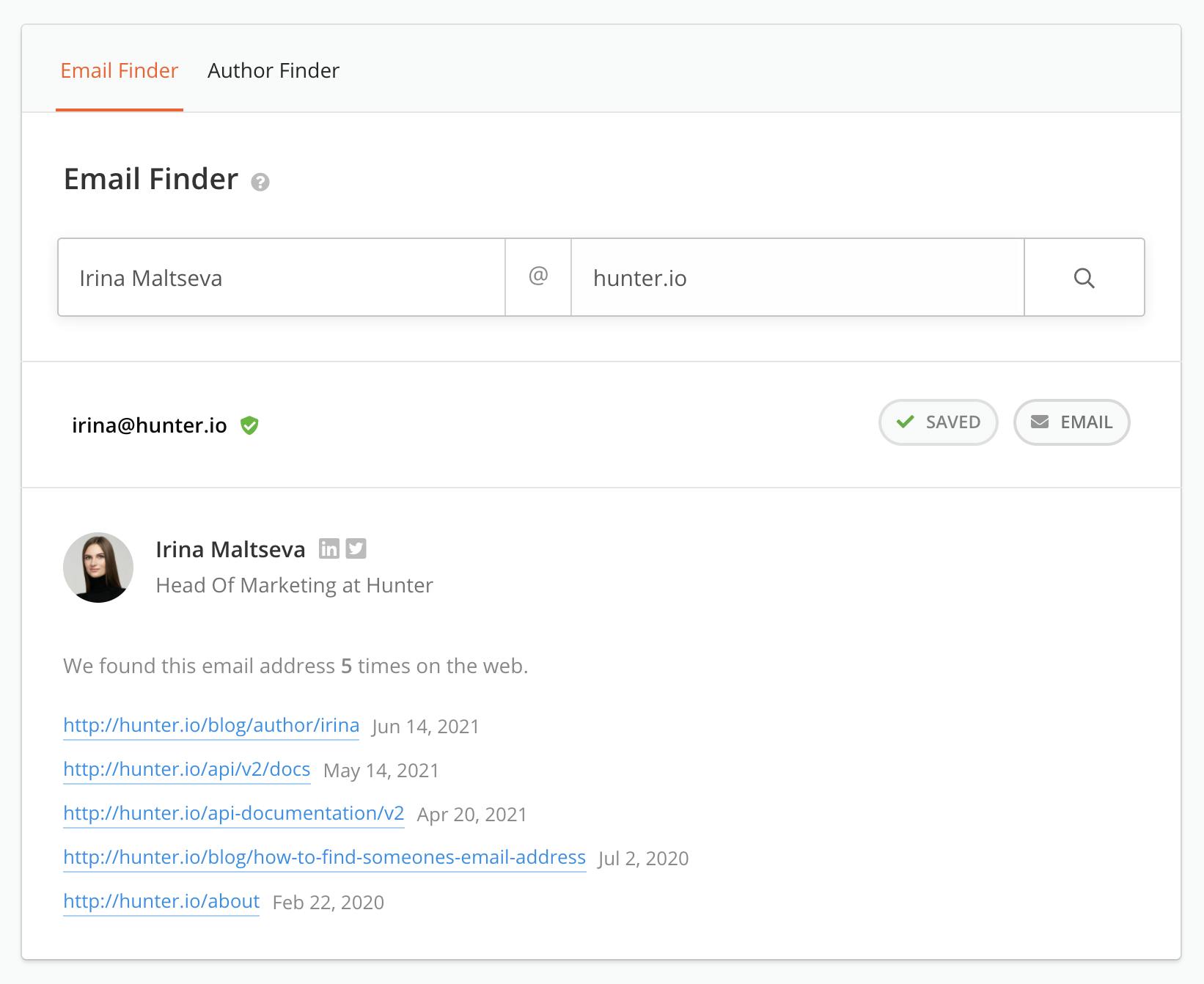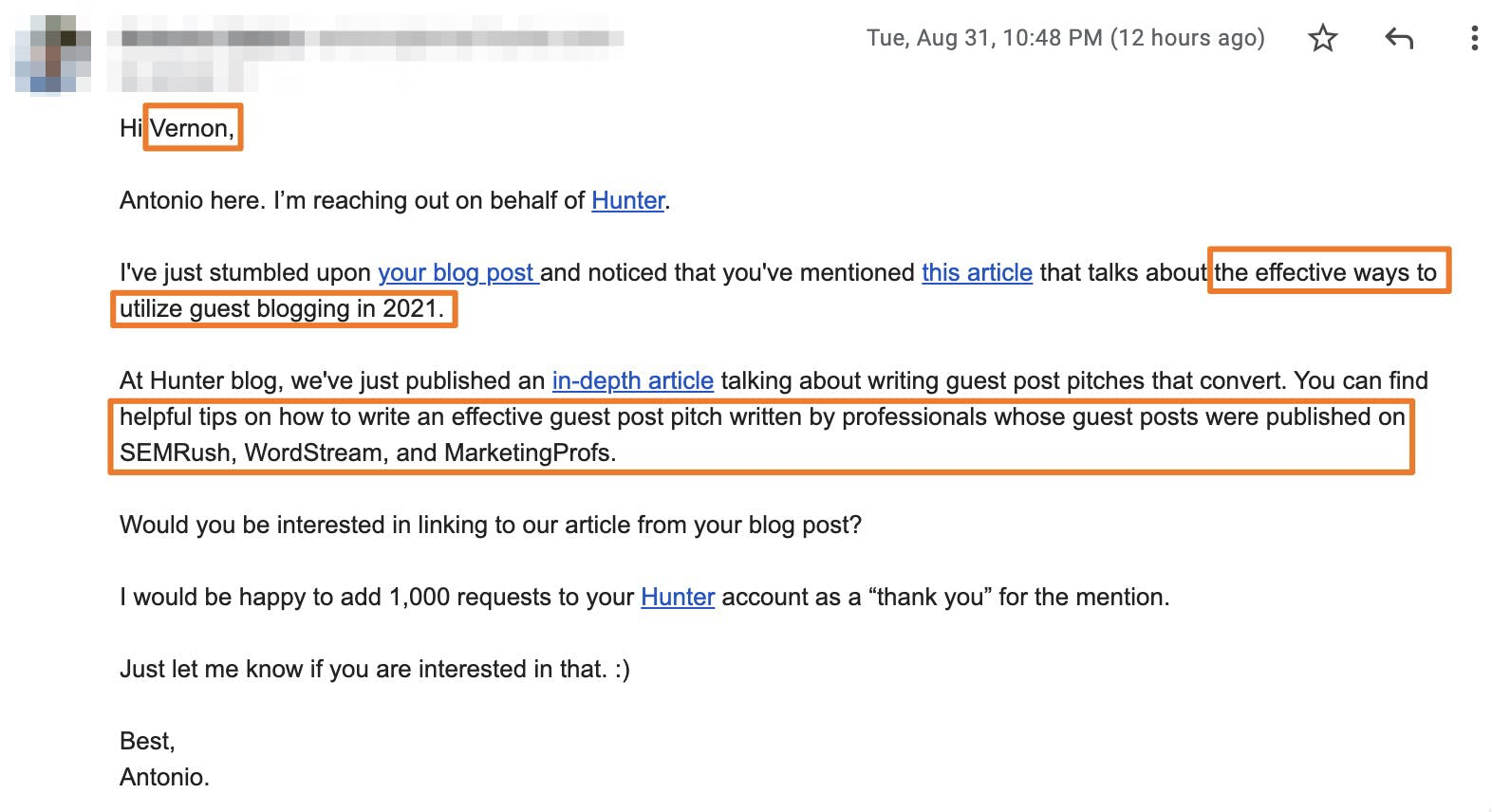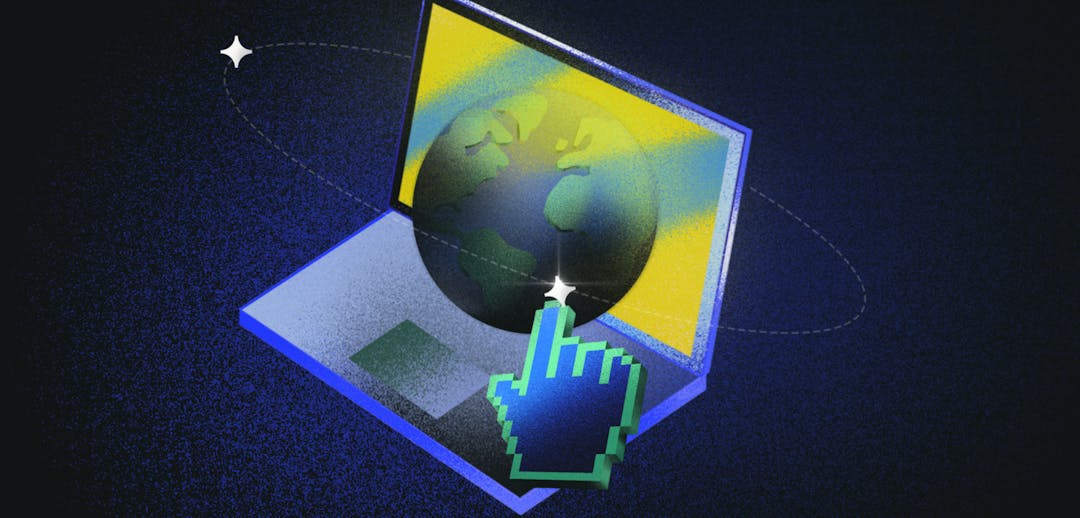Hunter.io is a platform that connects companies with the people that matter for their business - letting you find professional email addresses in seconds. We spoke to Head of Marketing, Irina Maltseva for some insights on how to make the most of those contacts.
Here are Irina's top tips on using cold outreach to gain B2B SaaS leads in 2022.
Selling something is hard. It was hard in 1922, it's hard in 2022. And it will continue to be hard because only 3% of customers trust salespeople .
But you can always sell better: by being right in front of a customer when they need a product you sell. It works for B2C, and it certainly works for B2B.
One way to reach the right demographics, nurture the leads and make yourself relevant to the right customer base is through cold email outreach. But it's easier said than done.
According to a Gartner report, only 23.9% of sales emails are opened . It becomes even more challenging when you're operating in the B2B space. That being said, cold email marketing can do wonders when done right.
Here's why cold email outreach for B2B lead generation simply works:
- Well-planned email marketing will fetch you more responses than other forms of outreach.
- It's highly scalable with automation tools and less costly as well!
- Cold emails are less intrusive than cold calls. Professionals busy taking their company to the next level don't like to be interrupted twice a day for calls they don't want to hop on.
Cold email is a crucial lead generation tactic, but it's also not very hard to land in the spam folder and kiss your outreach program a sad goodbye.
Below we'll discuss 9 key tactics that will help you use cold emails to generate and nurture qualified leads, push them further into the sales funnel, and stay away from spam triggers.
1) Brainstorm the ideal customer profile
Before you send emails, do your research. 300.4 billion emails are exchanged every day, which means you have to be right on the money while reaching out to cold leads.
First, a little soul searching. Ask yourself:
- What types of customers am I trying to reach?
- What pain points am I trying to address?
- Why should people use my product instead of the alternatives in the market?
Once you note down the answers, gather standard features like location, company size, industry, and spending capabilities.
Now go deeper. Find the position of the company in the market, what's annoying them right now, what they're trying to achieve in the near future, and how your solution fits in their stack.
The chances are your products will be used by businesses in different ways, so it's important to have several customer profiles.
2) Find contacts of decision-makers
Now that you have your ideal customer profile, it's time to find the contacts of movers and shakers within a company.
The decision-makers have the biggest say in your partnership with the company. From CEO to independent consultants, their hierarchies vary depending on whether you target SMBs or enterprises. If you want to reach them, you might want to use a contact lookup tool.
For instance, Hunter's Email Finder quickly pulls up the most relevant email addresses based on the person and domain names within seconds.

3) Build and clean the B2B leads contact list
When you build your email list, focus only on your most qualified customers. High-quality email recipients lead to high-quality engagements.
But building the contact list is only half the job done. You have to constantly monitor and get rid of inactive addresses. People often get promoted to a new position and assigned an email address that reflects their new role. People also leave companies. In most cases, they either stop checking the old inbox, or worst still, the address ceases to exist. That's why you need to verify email addresses before sending cold emails.
Sending mails to addresses that don't exist increases your bounce rate. It also impacts your email deliverability and hurts your reputation score. A bad reputation score can lead to domain or IP blacklist, which further can negatively impact your business. It is wise to start your cold outreach campaigns by sending emails in small batches, and tracking your deliverability. Once your campaigns achieve standard open and deliverability rates, and your email address is warmed up, it is safe to send emails to more prospects and automate the whole campaign process.
4) Write effective subject lines
A simple, yet effective subject line is one that immediately communicates what to expect in the emails. When crafting subject lines, you want to avoid sounding like a generic bot and introduce a level of personalization. A personalized subject line breaks barriers and increases open rates since recipients can see you’ve put time into crafting an email just for them. Try to add at least one personalized element such as the recipient’s first name, position or company name.
Your email subject line dictates how many people will open the mail. It essentially is the marker of your outreach success.
Within a short space, the subject line has to hook people in, tell them what the mail's all about and why it's relevant to them. It's a lot of work, but no one said outreach campaigns are easy.
What is great though, is the open rate you'll get with scroll-stopping, click-inducing subject lines. Here are some general rules to follow:
- Don't lie. Don't try to over-deliver or sensationalize. It's a shortcut to the spam folder
- Provide value upfront. It's a cold email. There's no time beating around the bush
- Keep the subject line short, preferably under 60 characters
When you add curiosity and a mild CTA by asking questions, the open rate skyrockets.
5) Personalize your email copy
Even though we're talking about B2B cold emails, we're ultimately communicating with real people on the other side of the screen. It's important to not address the company in general, when you can address a specific person in the team.
Adding a personal touch to your introduction, and sprinkling that same touch throughout the body is a good way to make the reader keep reading. Did the receiver recently post an achievement on LinkedIn? Congratulate them for that. Is there a recent development in the industry? Lead with that.
Perfectly written professional emails make sure you come across as a real human trying to communicate with another human. You should also establish a personal connection right at the end. Include the name, job title, and address of the sender for transparency.

6) Add interactive content to stand out
Recipients of your cold emails have no idea who you are. If your subject line has intrigued them enough to read your email, now’s the time to interact, lead and provide value to them.
Be thorough in your approach. You might get only one shot at this. Highlight your product features right from your website and explain how they will address the painpoints the recipient is experiencing.
Going out of your way to crafting a compelling and comprehensive email will seal the deal. When you use interactive content in an email , it also helps you shorten the email copy, which is something you should always target for B2B emails.
7) Add a clear and simple call to action
An amazing email copy won't result in anything substantial if the recipient doesn't know what to do with it. This is where CTAs come into the frame.
A call to action leads the recipient to your intended point. This is where you make your case stronger. But most companies fail to execute an effective CTA strategy because:
- They focus on it so much that the CTA banner becomes crowded
- Ignore it to the extent that it doesn't lead to an actionable step
Don't confuse readers with multiple buttons or outbound links. The singularity of focus from your end will help you narrow down the message to one point and one CTA. Stick to clarity and you'll see great click-through rates (CTRs).
8) Don’t forget to follow-up
Not all cold emails will fetch you a response. And that's okay.
What's not okay is giving up after one email. Follow-up emails work as a reminder, and in the cluttered inbox of today, it's important to remind people. But most follow-up strategies fail to add extra value.
When you're following up, expand and elaborate on the first email. Add a whitepaper, a case study, or an explanation as to why they should get in touch with you as soon as possible.
But how long should you wait to follow up? This varies a lot. But generally, it's a good idea to follow up 3 days after sending the first mail and include 2-3 emails in the pipeline before closing the lead. If a person doesn't want to interact with you, constantly pushing follow-ups will only irritate them.
9) Automate and track the outreach process
Manually sending emails and following up are both time-consuming and resource-intensive. By automating outreach campaigns you not only save time and cost but also free up reps to actually close leads. By using a campaign automation tool you can schedule emails, track their performance, and facilitate follow-up series. This way, you can use the insights to scale your outreach program fast.
In 2022, B2B cold email outreach campaign is a process that demands both automation and human ingenuity.
In a nutshell
Cold emails definitely work for B2B lead generation. But there's a fine line between an effective email outreach campaign and a spam series. Businesses don't tolerate poorly crafted campaigns so don't assume. Always be thorough, stay focused on a clear goal, and prioritize providing value to leads before selling your products.




